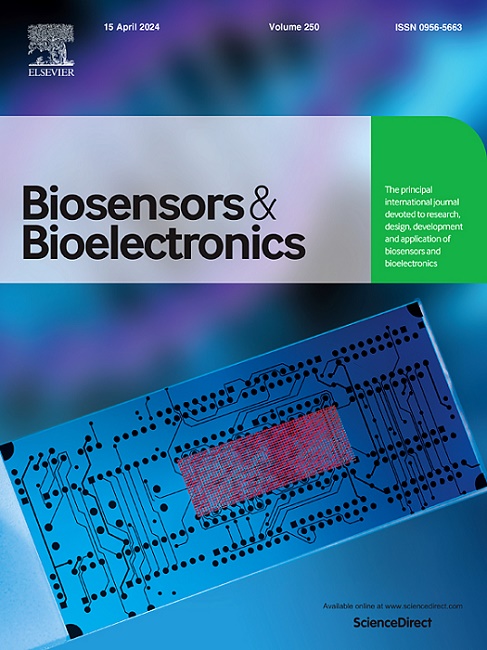A facile liquid biopsy assay for highly efficient CTCs capture and reagent-less monitoring of immune checkpoint PD-L1 expression on CTCs with non-small cell lung cancer patients
IF 10.7
1区 生物学
Q1 BIOPHYSICS
引用次数: 0
Abstract
Programmed cell death 1 ligand 1 (PD-L1) immunotherapy holds a pivotal role in lung cancer treatment. However, current methods for monitoring PD-L1 expression exhibit several limitations, including hysteresis and the invasive nature of tissue sampling. Circulating tumor cells (CTCs), the important biomarkers in liquid biopsy, are minimally invasive and facilitate continuous monitoring. Consequently, integrating CTC counting with PD-L1 expression analysis offers more comprehensive insights for the development of personalized treatment strategies development and efficacy evaluations. In this study, we presented a facile liquid biopsy assay designed for the dynamic monitoring of PD-L1 expression on CTCs captured from non-small cell lung cancer (NSCLC) patients. This assay was achieved by fabricating two high-performance probes: EpCAM and Vimentin dual-aptamer modified nitrogen-doped carbon quantum dots probe (E/V-apt-N-CQDs) and hairpin PD-L1 aptamer coupled with gold nanoparticles (PD-L1-apt-AuNPs). The E/V-apt-N-CQDs probe effectively captured two types of CTC models (H1299 and A549) exhibiting differential PD-L1 expression. Additionally, reagent-less detection of PD-L1 levels on CTCs was achieved using a portable magnetic electrochemical sensor with excellent specificity and sensitivity, which was capable of measuring PD-L1 concentrations as low as 2 ng/mL. Finally, this assay was applied in 41 NSCLC patients to investigate the correlation between CTC numbers or PD-L1 expression and disease progression and immunotherapy efficacy. The results indicated a significant association between elevated CTC counts or reduced PD-L1 levels and clinical progression. Moreover, this liquid assay successfully monitored dynamic changes in CTCs and PD-L1 expression in NSCLC patients receiving immunotherapy, indicating its potential for clinical application.
求助全文
约1分钟内获得全文
求助全文
来源期刊

Biosensors and Bioelectronics
工程技术-电化学
CiteScore
20.80
自引率
7.10%
发文量
1006
审稿时长
29 days
期刊介绍:
Biosensors & Bioelectronics, along with its open access companion journal Biosensors & Bioelectronics: X, is the leading international publication in the field of biosensors and bioelectronics. It covers research, design, development, and application of biosensors, which are analytical devices incorporating biological materials with physicochemical transducers. These devices, including sensors, DNA chips, electronic noses, and lab-on-a-chip, produce digital signals proportional to specific analytes. Examples include immunosensors and enzyme-based biosensors, applied in various fields such as medicine, environmental monitoring, and food industry. The journal also focuses on molecular and supramolecular structures for enhancing device performance.
 求助内容:
求助内容: 应助结果提醒方式:
应助结果提醒方式:


